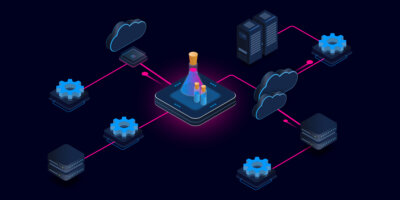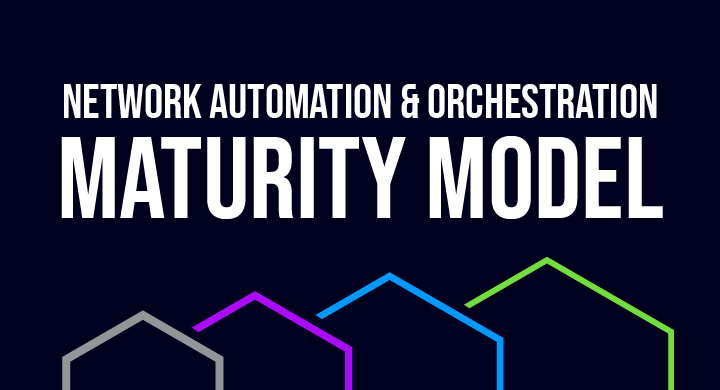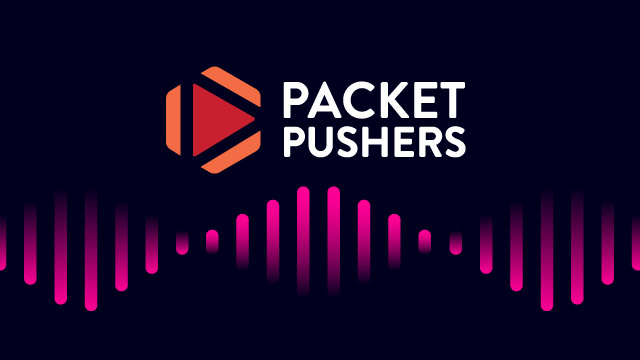INDUSTRY
Pharmaceuticals, Medical Technology
GOALS
- Establish an Automation-First Culture
- Standardize Automation Across Teams
- Accelerate Automation of Top Use Cases
USE CASES
Automation Center of Excellence
INTEGRATIONS

Key Results
![]()
Implemented 17 automation use cases in one year.
![]()
Reduced BGP/BFD-related network incidents from 11 per quarter to zero.
![]()
Centralized and standardized automation expertise across infrastructure teams.
![]()
Achieved 100% network device footprint for baseline compliance reporting.
![]()
Enabled skilled team members to maximize the impact of high-code automation.
The Need to Evolve Automation from Siloed Tooling to Collaborative Platforms
At this global pharmaceutical and medical technologies company, automation wasn’t a new idea. To keep up with their expanding infrastructure, their network team had already been building task-based automations using open source tools including Python and Ansible for several years.
These task automations were all built to replace a routine set of manual actions with a single command or script, and they are essential to scaling network operations. Task automations are critical as they automate domain-level activities, such as configuration changes and provisioning new devices, making network engineers’ day-to-day lives a bit easier.
However, as a team builds more and more task automations, they can become overwhelmed with management and maintenance needs.
It was no different at this company’s network automation team. They found themselves spending more time managing and updating these automation assets than actually executing them or building new ones. And the extra work required to share those automations with others, such as validations, access control, and auditing, meant that their reach was limited.
To solve these challenges and increase the impact of the network team’s automation work, leadership decided to pursue a Center of Excellence (CoE) model that would help bring together all of their disparate automations into a cohesive orchestration strategy.
A Center of Excellence is a culture initiative. It’s about bringing automation to the forefront of how IT and network operations are done by changing mindsets, improving skills, and adopting the right solutions to help streamline things. Any successful automation CoE involves people across different teams who come together to build a cohesive strategy and decide on a platform that enables standardization and scale. That way, organizations can encourage participation and enthusiasm to foster an automation-first mindset within the organization — the first step toward making automation a true operating model across all of IT infrastructure.

We were having initial success with DIY network automation, but as the team built more scripts, the extra work to be able to let others use them just started to pile up.
Senior Network Engineer
Why Itential Became the Core of Their Automation Center of Excellence
To implement a CoE approach, it’s important to select the right platform that can support this centralization by orchestrating disparate automation tooling and integrating across multiple technologies and domains. Itential’s unique integration capabilities that help users connect every automation tool and third-party system made it the perfect fit.
To get started, they took a measured, incremental approach: leverage Itential to solve four high-priority use cases quickly, thereby increasing familiarity, building a working process, and proving to each team that the new platform approach would deliver results.
It was immediately clear that Itential’s orchestration capabilities would greatly increase the impact of any given Python or Ansible automation. Orchestration means connecting individual task automations to build an overall process which can then be automated end-to-end. With Itential, the team’s task automations can now be attached to APIs and included in end-to-end process workflows that can also include automated activities on third party systems, such as change management or security systems.
Of course, this didn’t mean the network team would need to throw away any of their existing automation work. With Itential Automation Gateway (IAG), the network team is able to continue building task automations with the tools they’re comfortable using. Whether it’s automation you built in Python, Ansible, Terraform, or another tool, IAG helps to standardize the automation execution layer so automations are easier to share and execute.
Additionally, our orchestration solution, the Itential Automation Platform, offers low-code workflow building capabilities and the ability to easily onboard those automations from an IAG instance by attaching API endpoints to them. That means the people who build automations can focus on that, and the extra requirements for orchestrating them into end-to-end processes can be handled by IAP and the operations teams building workflows.
The company’s Center of Excellence model and Itential’s integrated platform have created a framework for centralizing automations. Now, because all network devices, all task automations, and all third party systems can be onboarded to Itential, they’re able to standardize and accelerate automation across the company without forcing anyone into specific tooling decisions.
Key capabilities that make this possible include:
- The ability to leverage and extend existing automations built with tools like Python and Ansible by attaching API endpoints to them, enabling these automations to be included in end-to-end orchestrated process workflows.
- Comprehensive integrations generated using API documents with every network and IT system to extend the reach of their automations.
- An easy to use, low-code workflow building canvas so that coders and non-coders alike can participate in building orchestrations.
- The ability to expose automations for self-serve consumption via several methods including a ServiceNow catalog and CI/CD pipelines. This enables others to request and leverage automations without the need to manually run scripts themselves, understand technical details, or even have visibility into the relevant infrastructure components that their request will affect.

Itential gave us a centralized platform in which we could standardize our automation initiatives across all infrastructure teams and truly build a Center of Excellence model. People who’ve invested into new skills to build automations see more impact from their work, and we can orchestrate across different automation tools and domains to deliver services back to our end users faster and more consistently.
Automation Center of Excellence Leader
Dedicated Roadmap for Automation Uses Cases, Expanded Participation
Now, when someone at this company is interested in automation, they take a standardized internal course that includes basic familiarity with Python, basic familiarity with JSON, APIs, and automation skills in Itential. Then, they can start to participate in CoE initiatives like tooling decisions and use case prioritization.
CoE participants are key for not only planning and implementing automation, but for assessing its impact across all of the different teams involved so leadership can directly see the value of this streamlined approach.
Today, this company’s CoE initiatives have helped them achieve high device footprints across several high-impact use cases including automated patching, baseline compliance reporting, and enforcing CMDB accuracy. They’ve built a consistent roadmap for their automation efforts that they’ve been able to stick to, with 17 completed use cases and at least 5 new ones planned per quarter. They’ve reduced BGP/BFD related network incidents from 11 per quarter to zero. Plus, they’ve been able to onboard new people into their automation efforts much more quickly and effectively than before, whether they’re comfortable writing automations or they want nothing to do with code.
Itential’s central orchestration platform and its powerful API gateway for task automations both help power the CoE approach by providing the framework for a centralized automation ecosystem that makes automation and orchestration easier, more reliable, and accessible across the organization, driving participation and enthusiasm.
This is the automation-first culture the company wanted to implement, and it’s driving success across their IT organization and for the business at large.
Learn Why Infrastructure Teams Choose Itential
- From Consumer to Producer: Why It’s Time for a New Era in Network Automation
- Gartner® Hype Cycle for I&O Automation Highlights Shift Towards “Automation-First” & Need for Broader Orchestration
- How a Global Investment Bank Embraced High-Code & Low-Code to Scale Network Automation
- Network Engineering Should Be a Standard, Not an Art
- No Details Left Behind: How Network Teams Can Audit Infrastructure Access Easily with Stateful Orchestration
- Taking Action with ServiceNow: Cloud-Like Delivery of IT Infrastructure Services
- Why Build AND Buy Is the Model for Network Automation Success
- Extend the Reach of Your Network Automations through Orchestrated Workflows with Itential
- The Evolution of Network Automation: Transitioning from Consumer to Producer (NFD 36)
- Tracking Infrastructure Access for Audit Requirements with Itential’s Lifecycle Management Capabilities
- Packet Pushers: From Automation to Orchestration for a FinTech Network
- Global Investment Banking Firm Scales Network Automation by Adopting a High-Code + Low-Code Strategy with Itential
- How to Connect ServiceNow to Your Infrastructure with Itential
- How to Track & Orchestrate Hybrid, Multi-Cloud Security Services
Get Started with Itential
Schedule a Custom Demo
Schedule time with our automation experts to explore how our platform can help simplify and accelerate your automation journey.
Take An Interactive Tour
See how Itential products work firsthand in our interactive tours.
Watch Demo Videos
Watch demos of Itential's suite of network automation and orchestration products.


